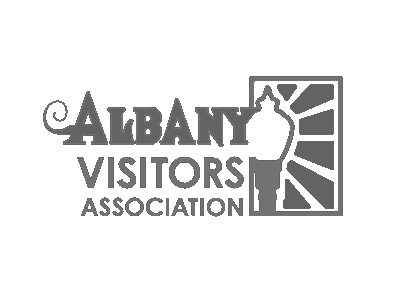Contact
Report Stormwater Pollution in Albany
Water carrying pollution such as oil, pet waste, or paint enters the storm system which can harm the rivers and lakes we rely on for recreation, ecological value and our water system.
It is against Albany Municipal Code to dump or discharge waste into a storm system (catch basins, ditches, streams, and ponds). If you see someone using the storm system for disposal, report it!
Online reporting form or call 541-917-7600.
Indicators of Pollution
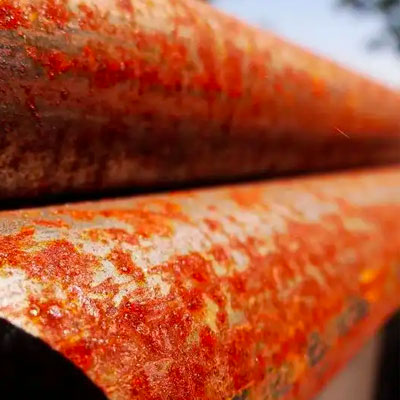
Corroded or stained pipes
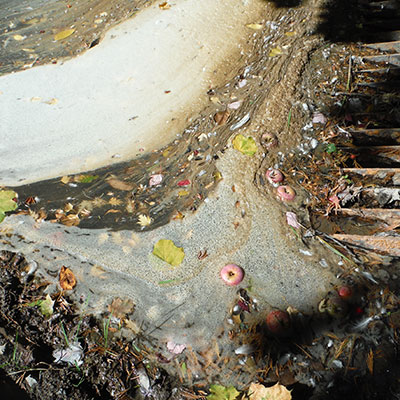
Suds or foamy water
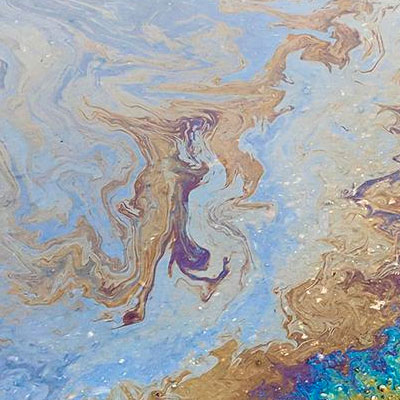
Oil sheen

Unusual water color
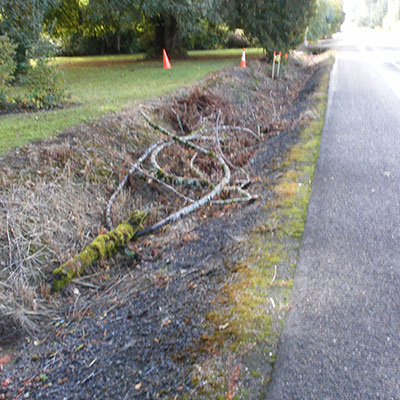
Dumped debris
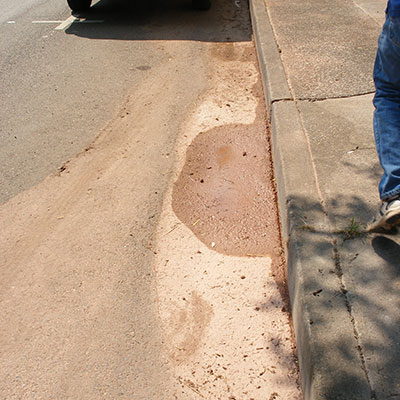
Debris or dirt in road
Prohibited
- dumping yard debris
- dumping liquids into storm drains chlorinated swimming pool/hot tub draining
- carpet cleaning
- sanitary sewer overflows
- washing down of loading areas
- concrete cutting and washout
- industrial wastewater
- commercial carwash wastewater
Allowable
- residential car washing (using cold water and no soap)
- landscape irrigation
- uncontaminated water line flushing
- lawn watering
- water flowing from riparian habitats and wetlands
- dechlorinated swimming pool water
- foundation, footing and crawlspace drains (where flows are not contaminated [i.e., process materials or other pollutant])
- fire hydrant flushing
- street and pavement washwaters (provided that chemicals, soaps, detergents, steam or heated water are not used)
- Details
Oil spill cleanup
Oil and water don’t mix. In fact, one quart of oil can contaminate one million gallons of water! So if you have a leaky car don’t try washing the oil down the storm drain. Cleaning oil leaked from cars is as easy as shake, sweep, and toss!
1.
Shake some absorbent material on the spill and let it sit for a few minutes.
(A cheap option is clay kitty litter.)
2.
Sweep up the absorbent material
3.
Toss it in the trash!
- Details
Inspection Program
Stormwater quality facilities are vegetated areas that that help manage stormwater in urban areas. These facilities are an integral part of the City of Albany’s efforts to protect and preserve the local water ways. Facilities like the ones along North Albany Road, Salem Avenue, and Broadalbin Street help reduce the amount of runoff and to treat polluted runoff before it reaches the creeks, rivers, and lakes.
Stormwater quality facilities are designed to mimic natural landscape features while minimizing hard surfaces, like parking lots. Treating stormwater with these landscaped features serves the double purpose of adding beauty to urban spaces and capturing and filtering stormwater.
The most common types of facilities are planters and swales, but there are also ponds, wetlands, and even underground facilities such as catch basins and vaults.
Public Facilities
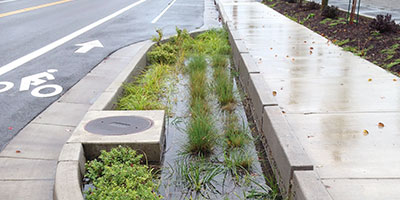
The City owns and maintains over 375 stormwater facilities and more are being installed each year. Staff inspect the facilities annually to make sure they are working correctly and not causing any hazards for drivers. Weeding, replanting bare areas, and removal of sediment takes place whenever we find a facility in need.
Private Facilities
Each new development has stormwater facilities that treat stormwater from the property. City staff inspect private facilities annually and work with property owners to make any corrections needed.
Schedule an inspection
The City inspects private facilities with an O&M agreement.
To schedule an inspection, email
Frequently Asked Questions
Step 1
Locate the facilities on your property using this map. Click on the facility to determine if it is a swale, planter, pond, etc.
Step 2
Review the original planting plan for the facility. If you need a copy, please contact
Step 3
Step 4
Review the approved planting specifications for the City. If soil media is needed, make sure it is approved growing media for stormwater quality facilities.
- Details
Maintaining a healthy yard
The chemical products you use on your lawn can enter our local waterways, even if you don’t live next to a stream or lake. Rain that falls onto your lawn picks up pesticides, herbicides and fertilizers then carries it to storm drains that drain directly to the Calapooia and Willamette Rivers. Pesticides and herbicides can cause algae blooms that harm fish and other wildlife. Keeping your lawn healthy and beautiful doesn’t require chemicals. Keep reading to find how you can keep your yard fish-friendly!
Tips for Maintaining a Healthy Yard
The best way to keep your yard free from pests and weeds is to maintain a healthy yard.
Right Plant, Right Place Before planting look at how much sunlight your yard gets, what type of soil you have and amount of moisture. Then pick the plant that will grow best in those conditions.
Plant native plants they are adapted to local conditions and often require less water. They can be great for pollinators too!
Maintain Sprinkler Systems Set your irrigation system to water 1” per week. Overwatering can lead to high water bills and wash chemicals into the storm drains.
Sweep or rake up leaves and debris instead of pressure washing.
Put yard debris in your yard container or compost it. Never dump yard debris in ditches or water ways.
For more information check out our water conservation page.
Pests
Compost and mulch can help keep your plants disease free
Place egg or oyster shells around plants to keep slugs away
Ladybugs, spiders, and lacewing all eat harmful pests
Weeds
Chose hardy plants that can out compete weeds.
Manual removal is a great way to get rid of weeds and get exercise
Pour boiling water or highly concentrated vinegar over weeds
Use organic compost and mulch - they are free from many weed seeds found in most compost and mulch.
Fertilizers
Aerate your lawn to allow moisture and nutrients to reach plant roots. It will help roots grow deeper and stronger, which leads to healthier plants.
Mulch around your plants helps keep plants healthy, so they require less fertilizers
Compost helps keep soils healthy nutrients. Compost can be made at home with kitchen and yard waste.
If you must use pesticides or herbicides read the label carefully and use only as directed. Do not apply within 48 hours of the next rain event.
For more information:
- Northwest Center for Alternatives to Pesticides
- Benton County Soil and Water Conservation District’s article on Meadowscaping
- Details
Fixing your car
What’s Leaking?
The color and location of the leak can help identify the issue. Coolant, power steering fluid, engine oil and transmission fluid leak from the front of your vehicle. Break fluid leak near the wheels while fuel leak from the rear.
|
Coolant |
Colorful, slimy drips at the front of your car could be coolant. Have a local repair shop check the coolant levels. |
|
Power Steering Fluid |
Power steering fluid leaks in a variety of colors and could impair the ability to steer your car. Check the fluid levels while your car is off. |
|
Engine Oil |
If you notice the smell of burning oil or dark brown stains under your engine you may have an oil leak. Check your oil levels when your engine is cool, if you notice you are low on oil often contact a mechanic. |
|
Transmission Fluid |
Reddish to brown leak from under your engine area could be a transmission leak. |
|
Break Fluid |
If you notice a brownish liquid near the wheels of your vehicle it could be from your break system. |
|
Fuel (gasoline and diesel) |
Fuel leaks are usually colorless until mixed with water. If you notice a rainbow color stain when the ground it wet, it could be a leak in your fuel system. |
Finding the Right Repair Shop
- Read reviews online.
- Do you research first to have an estimate of what the repairs should cost.
- Get a second opinion if needed.
- Ask if the shop guarantees their work.
- Find an EcoBiz autoshop.
- Details




